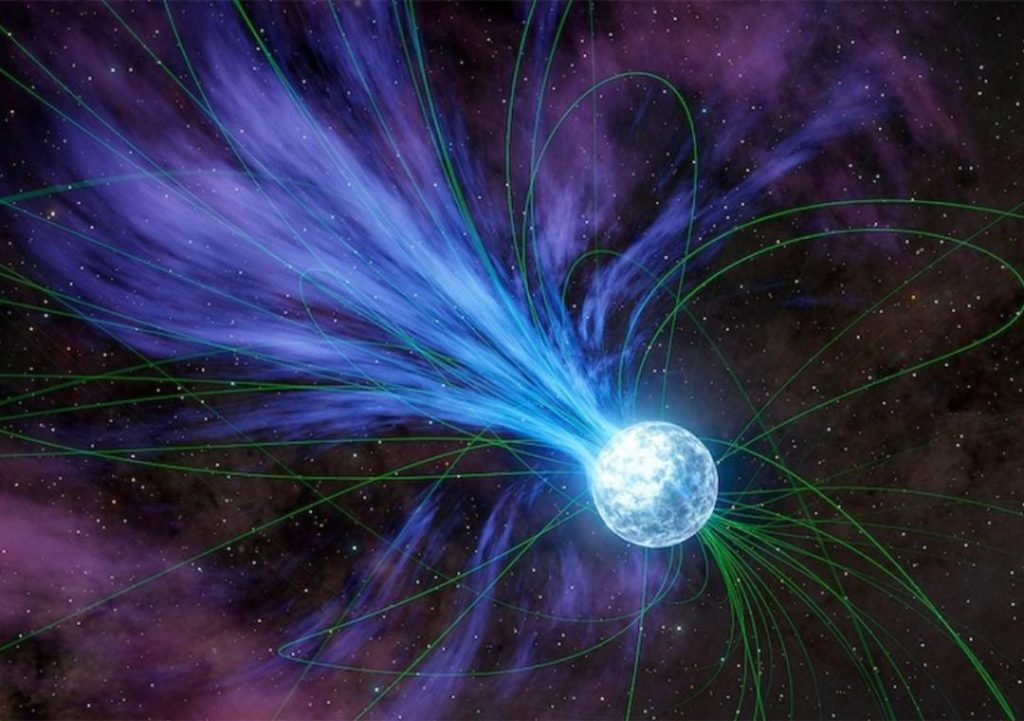
Gold & Platinum Created through Neutron Stars’ Explosions: Study
For centuries, humans have been fascinated by the origins of the precious metals we wear as jewelry, use in electronics, and covet for their rarity and value. Gold and platinum, in particular, have long been the subject of speculation and myth-making. Where did these metals come from? Was it a divine gift, or did they have a more earthly origin? A recent study has shed new light on the answer, revealing that magnetars, or highly magnetized neutron stars, played a crucial role in the creation of these precious metals.
The Study: A Cosmic Event 20 Years Ago
According to a study led by Columbia University student Anirudh Patel, magnetars or highly magnetized neutron stars helped create elements like gold and platinum in a cosmic event that occurred over 20 years ago. The study, published in the journal Nature Astronomy, suggests that magnetars exploded and released flares that contained these elements.
How it Happened
Neutron stars are incredibly dense objects formed from the remnants of massive stars that have undergone a supernova explosion. When a neutron star is highly magnetized, it becomes a magnetar. In this state, the magnetar’s magnetic field is so strong that it can heat up the surrounding material, causing it to emit powerful flares.
In the case of the study, scientists believe that a magnetar in the Milky Way galaxy exploded around 20 years ago. This explosion, known as a gamma-ray burst, released a massive amount of energy into space, including the elements gold and platinum.
The Elements Formed
Gold and platinum, both dense and heavy elements, are formed through a process known as rapid neutron capture or r-process nucleosynthesis. This process occurs when a massive star undergoes a supernova explosion, causing the star’s core to collapse and heat up. The intense heat and pressure in the core create an environment in which atomic nuclei can combine to form heavier elements.
In the case of the magnetar explosion, the intense energy released by the flare created a similar environment, allowing the elements gold and platinum to form. These elements were then released into space, where they could be incorporated into other celestial bodies or eventually make their way to Earth.
Frequency of These Explosions
While the study focuses on a specific event 20 years ago, scientists believe that magnetars explode approximately once per decade in the Milky Way galaxy and annually across the observable universe. This means that these explosions could be occurring more frequently than previously thought, potentially creating new elements and adding to our understanding of the universe’s chemical composition.
Implications for the Origin of Precious Metals
The study’s findings have significant implications for our understanding of the origin of precious metals like gold and platinum. For centuries, humans have been fascinated by these metals, often attributing their formation to divine intervention or mythical processes. However, this study demonstrates that the creation of these metals is a natural process that occurs in the universe, involving the explosive energy of magnetars and the rapid formation of heavy elements.
Conclusion
The study led by Anirudh Patel has shed new light on the origins of precious metals like gold and platinum. By exploring the explosion of magnetars and the formation of heavy elements, scientists have gained a deeper understanding of the universe’s chemical composition and the processes that shape it. As we continue to explore the universe and uncover its secrets, we may yet discover even more surprising and fascinating stories about the origins of the elements that make up our world.
Source:






